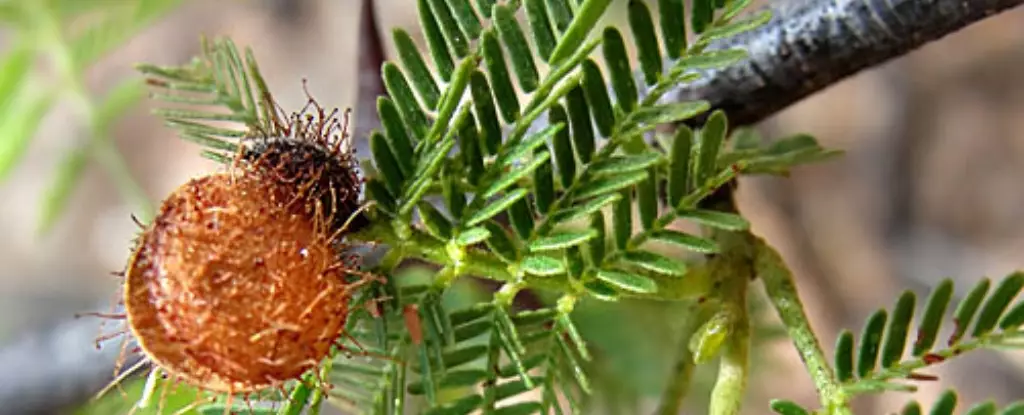In contemporary discussions about mental health treatments, the conversation is increasingly leaning toward the integration of traditional practices and modern science. One of the most intriguing examples of this is the jurema preta plant, historically significant to Indigenous cultures in Brazil, which is gaining traction as a potential breakthrough in the treatment of depression. This plant, known for its psychoactive properties due to the presence of dimethyltryptamine (DMT), is making waves not only within indigenous rituals but also in clinical research settings. With many turning to its roots—quite literally—it presents an opportunity to explore the intersection of culture, spirituality, and mental health recovery.
In Brazil, where the practice of using jurema is deeply woven into the fabric of Indigenous rituals, individuals seeking solace from their mental health issues often find themselves at street stalls selling medicinal herbs. The practice of extracting DMT from jurema roots, such as what Guaracy Carvajal did in 2016, highlights a growing need for alternative solutions in mental health. Carvajal’s account, where he transformed his experience of chronic depression into something uplifting by using this potent substance, opens the door to numerous questions about the efficacy, accessibility, and potential dangers associated with such practices.
Innovative Mind States: Early Research Insights
Researchers like physicist Draulio Araujo have initiated scientific studies intending to understand and quantify the impact of jurema’s psychoactive components on depression. Araujo’s investigation into DMT is groundbreaking; patients reported marked improvements in mood as soon as one day after treatment. This rapid response is striking, especially compared to traditional pharmaceuticals, which often require weeks to manifest any effect. However, Araujo is careful in his assertions, emphasizing that psychedelics are not a universal remedy for everyone.
The dichotomy of patient experience in Araujo’s research serves as a reminder of the unique complexities of mental health treatment. While many reflected on achieving a certain “clarity” or sense of resolution following treatment, some remained unchanged. The distinction that not all who try this path will find healing emphasizes the need for a tailored approach to mental health—one that resonates with each individual’s history, culture, and psychological needs.
The Role of Integration: Therapy and Traditional Practices
A notable aspect of Araujo’s approach is the integration of psychological therapy alongside DMT treatments. The combination of these distinct modes could offer a more holistic pathway to healing, considering the mental health crisis where conventional methods often fall short. By pairing the potential of psychedelics with psychological support, researchers aim to create a framework that not only addresses symptoms but also engages with the underlying causes of emotional distress.
Patients like Carvajal have perceived a “lighter life” post-treatment, suggesting that the therapeutic journey spurred by jurema preta is more than just physiological; it is also profoundly spiritual and emotional. One young participant, Joyce Souza, articulated that her experiences during jurema ceremonies allow her to access deeper spiritual channels, enhancing her ability to communicate with her inner self. This revelation implies that the act of engaging with jurema transcends mere chemical reactions in the brain—it fosters a deeper understanding of one’s personal narrative and struggles.
Social Implications: Risk and Accessibility
Despite the promising findings, the legal landscape surrounding DMT remains fraught with complexities, particularly regarding its use outside of religious and scientific contexts. While Brazil currently supports the cultivation of jurema, the consumption of DMT is limited, which could restrict potential users from fully benefiting from its properties. This inconsistency raises critical questions about accessibility—who gets to benefit from this alternative treatment? It is paramount to navigate these waters carefully, ensuring that practices rooted in Indigenous knowledge can be shared responsibly within modern therapeutic frameworks without commodification.
Araujo’s aspiration to broaden his DMT research to include a larger sample of participants is a step toward establishing a clearer understanding of the substance’s clinical viability. However, it also underlines the necessity of continuing respectful dialogue about the ethical implications of using traditional knowledge in modern contexts.
As discussions around jurema preta unfold, a broader dialogue regarding mental health treatments continues, emphasizing the need for innovative strategies that respect cultural practices while providing real solutions to suffering individuals. The synthesis of scientific inquiry with traditional practices can lay a foundation for a more empathetic understanding of mental health, offering hope as we explore new frontiers in healing.


Leave a Reply